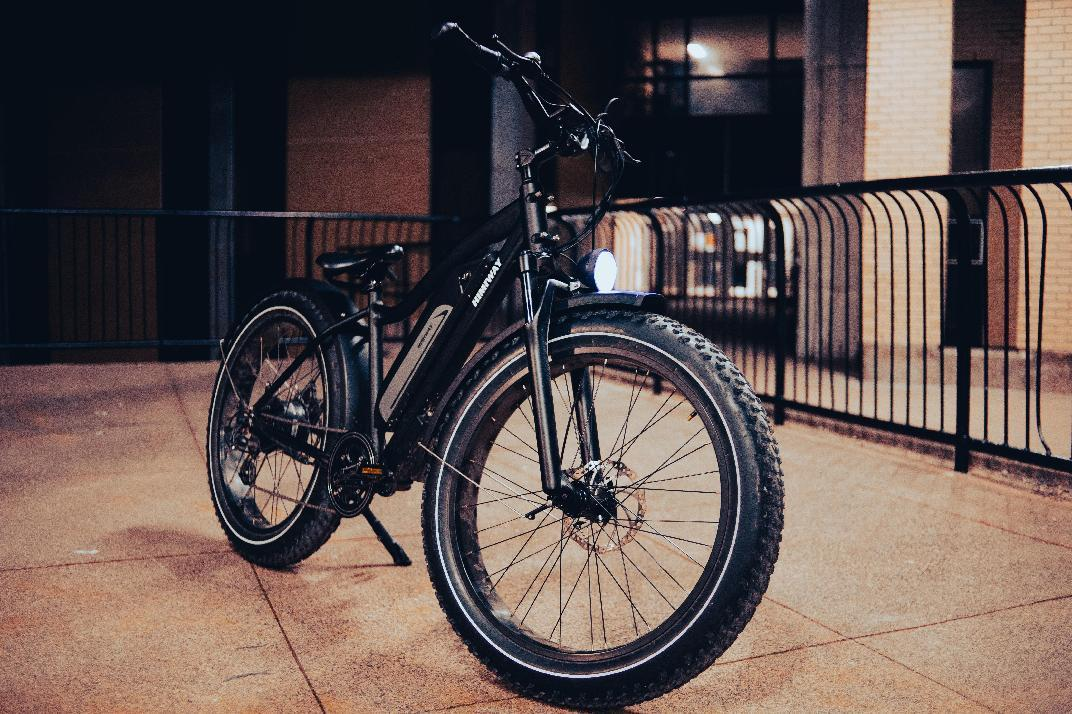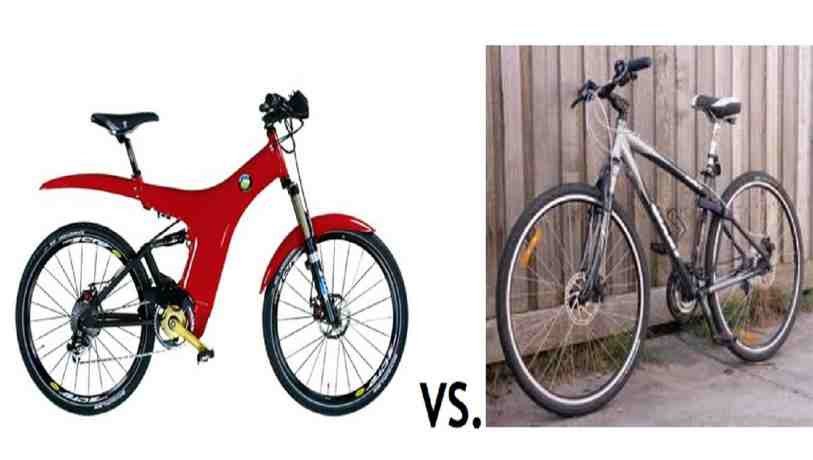
After the boom of e-bike sales in Europe in the early 2000s, more manufacturers started producing electric bikes globally. The rise of e-bike use also led to a rise in Electric Bikes as a category. There are various types of electric bikes including city, mountain, racing, and affordable options. From the humble bicycle to mechanical road racers, karts and even here are more modern offerings than ever before. Thanks to innovations in manufacturing and an increase in services offering great deals on quality electric bicycles, we now have access to bikes at an unprecedented rate. But what do we know about the current market? This article will provide you with all you need to know about different types of electric bikes available today with detailed information, insight from professionals, and user reviews from other users so that you can make the right choice for your needs.
Types of Electric Bikes
There are many different types of electric bikes available and each one comes with its own set of benefits and features. To help you choose which type of electric bike is best for you, this section will provide you with an overview of the most common types of electric bikes and their main characteristics.
- City Bikes: The traditional smart city bike has been around for quite some time and is still the most popular type of electric bike. It provides a great balance of comfort, maneuverability, and performance. These bikes are designed for easy riding around the city with a medium-sized frame and a sturdy, upright geometry. They are designed with either a soft-touch or a rigid upright seat which helps to balance out the bike and make it more comfortable to ride for longer distances.
- Mountain Bikes: Mountain bikes are designed for off-road use, with sturdy frames and wider tires than city bikes for increased stability and traction. Unlike city bikes that are designed for comfort, mountain bikes are designed for speed and off-road performance. The main differences between city bikes and mountain bikes lie in the frame geometry, suspension, and drive system.
- Road Bikes: Road bikes are designed for off-road use and are designed to provide the rider with greater comfort and stability over long distances. Road bikes provide a more upright riding position and are designed with a soft-touch or rigid upright seat to help balance out the bike and provide the rider with a more comfortable ride. The main difference between the other categories is with regards to the drive system. In general, road bikes use a more conventional drive system that transfers power to the wheel via a belt, chain, or other drive systems.
How to Choose an Electric Bike?
Now that you’re aware of the different types of electric bikes available and their key characteristics, you’ll need to know which electric bike is best suited for your needs and riding style. To help you with your choice, we have broken down the most important factors that you should consider when choosing an electric bike.
- Speed: A common misconception is that the higher the speed of an electric bike, the better. However, the best electric bikes are actually designed for high speeds for off-road use. They are engineered to provide the highest power and torque at a low speed to prevent them from becoming unstable.
- Range: The range of an electric bike is the distance you can travel on a single charge. Unlike cars, electric bikes are designed to be ridden on a single charge. The determining factor of the range of an electric bike is the motor. Higher power and torque motors can travel further with a single charge.
- Charging: The charging method on an electric bike plays a significant role in the range you can travel. Most electric bikes use a traditional charging method where the bike is placed in a dock or mounted on a wall and plugged into a wall socket. This method is convenient and allows you to charge your bike without having to pedal. However, there are also handheld electric bike chargers that allow you to charge your bike on the go.
City Bikes
City bikes are designed for easy, casual, and comfortable use. They are lightweight electric bikes that are designed for short distances, errands, and touring. They are generally pedal-assist or throttle-powered for ease of use and provide a comfortable, upright riding position. These bikes are great for commuting to work, spending some extra time outdoors, or touring around a small city. They are generally equipped with a sturdy, upright frame and a comfortable, casual-style saddle seat. City bikes are designed with a low center of gravity to make them easier to control and provide greater stability over long distances.
- Range: The range of a city bike depends on the battery capacity. Generally speaking, e-bike batteries are smaller and have a lower capacity than car batteries, so they have a shorter range. However, there are also city bikes with mid-sized batteries that have a longer range. - Charging: Most city bikes use a traditional wall-plug charging method. The charging port is usually located on the frame of the bike. The charging time depends on the model of the bike and the capacity of the battery. Generally, mid-sized batteries take between 3 and 9 hours to fully charge while smaller batteries can be charged in a matter of hours.
Mountain Bikes
Mountain bikes are the most popular type of electric bike due to their versatility and off-road performance. Mountain bikes are designed with sturdy, off-road-oriented frames and tires, high-end drive systems, and rugged, off-road-oriented components. These bikes are designed for off-road biking and are generally not designed for use on paved roads. Mountain bikes are built for off-road use and include features such as mud and snow tires, wide tires, and tough suspension.
- Range: The range of a mountain e-bike depends on the battery capacity. Generally, mid-sized batteries have a comparable range to a traditional gas-powered bike and a smaller capacity than a traditional e-bike.
- Charging: Mountain bikes use a pedal-assist or throttle-powered drive system and are equipped with a charging port on the frame. This port allows you to charge your bike without pedaling. Most models of mountain bikes have a charging time of 6 to 12 hours and a maximum range of 25 to 50 miles.
Road Bikes
Road bikes are designed for off-road use and are generally equipped with sturdy, off-road-oriented frames and tires, robust drive systems, and a sturdy, off-road-oriented component. These bikes are designed for off-road riding and are generally not designed for use on paved roads. Road bikes are designed for off-road use and are generally designed with a rigid frame and upright riding position.
- Range: The range of a road bike depends on the battery capacity. Generally, mid-sized batteries have a comparable range to a traditional gas-powered bike and a smaller capacity than a standard road bike.
- Charging: Road bikes use a conventional drive system, which means they are powered by a chain and/or a belt. The charging time depends on the model of the bike and the capacity of the battery.
Gearless bikes (e-MTBs)
eMTBs are a new type of bike that have no gears or chain and use a battery to provide power. They offer an advantage over other types of bikes in that they can be powered by a human even when the rider is off-road. However, eMTBs do not offer the same range or speed as other types of bikes. They are also heavier and more expensive than traditional bikes. eMTBs are designed for off-road use and are built for rugged terrain. They may not have a suspension fork or a suspension seatpost, making them unsuitable for paved roads. They come in a variety of sizes, from small models with a 250-watt battery and a maximum speed of 15 mph to large battery-powered models with a range of up to 80 miles and a maximum speed of 25 mph.
Electric folding bikes
An electric folding bike could be the answer if you need to commute or simply have limited storage space. Longer bike commutes are easier and more pleasant with the motor than with a non-assisted folding bike.
The battery is generally hidden in the frames of folding ebikes, or they may come with a removable battery to make getting on and off public transportation a little easier. A replaceable battery also allows you to take it away where charging is more convenient (at your desk, for example, if you use the bike to ride to work).
Pros: Ideal for a longer commute, can be taken on public transport
Cons: Can be heavy to carry on and off public transport and may have a limited range
Features to Look For in an Electric Bike
- Throttle Type: Some electric bikes come with a pedal-assist, throttle or throttle/brake type. This is important to consider because these types of bikes are designed for off-road use, but may be used on paved roads as well. If you do plan to use your bike on paved roads, you should make sure the motor type is appropriate for paved road use.
- Motor size: The more powerful the motor, the longer the range and the higher the speed. However, the heavier the bike and the longer the range, the more expensive it will be.
- Battery type: The most common type of battery is Lithium-ion, but there are other types such as NiMH, lead acid, traction and NiCad. NiMH batteries have a better energy density than Li-ion, but have a lower rate of charge and are heavier than Li-ion. You should also consider the warranty and maintenance of the battery.
- Speed: The speed is important for off-road and paved road use. The speed is important for a smooth ride and helps reduce the load on the motor. Higher speeds can also increase the heat generated by the motor, leading to premature failure of the motor.
- Range: The range is the distance you can travel before you have to charge the battery. This is important for paved road use as well as off-road travel as you need to be able to stop and charge the battery while traveling off-road.
- Brake: The brake type is important for off-road use as well as paved road use. This is because you will need to stop the bike at some point and you want a braking system that works well.
- Frame and fork: The frame and fork should be strong and lightweight to reduce the overall weight of the bike. This is important for both off-road and paved road use.
E-Bike Maintenance
One of the most popular myths about e-bikes is that they are extremely difficult to maintain and repair, involving costly support and professional assistance to keep them going properly.
This isn't the case; e-bikes are just as durable as regular bikes, so all you really need to do is service the bike's key mechanical elements like the chain, gearing, and brakes regularly. If you have a technical problem that you can't solve on your own, or if your motor or battery has died and has to be replaced, don't hesitate to bring your bike into one of our stores and get it checked out by one of our specialists.
Electric Bike FAQs
Why ride an E-Bike?
You may ride quicker than on a regular bike, avoid traffic by choosing bike paths, and then park for free close to your destination with an E-bike. Riding uphill or against the wind will no longer be a chore, and you'll arrive at your destination without breaking a sweat.
How fast do E-bikes go?
E-bikes in classes 1 and 2 will assist you up to 20 mph. Class 3 E-bikes have a top speed of 28 mph (pedaling + motor). This allows you to reach where you're going faster without having to register your bike as a motor vehicle, which would involve a license, registration, and insurance, as well as limiting your ability to ride on paved bike trails.
Can you still get good a workout on an E-bike?
Yes! Riding an E-bike allows you to customize your workout! You can modify the power assist to meet your desired level of exertion. You'll be able to get to work or meetings without breaking a sweat, but you'll get a great exercise on the way home!
How much do E-bikes cost?
The cost of an E-bike varies greatly. A good E-bike will set you back roughly $1,500 and can even exceed $10,000. Between $2,000 and $5,000 is the average price range.
What range do E-bikes have?
Because there are so many variables that influence range, it can be difficult to determine precisely. To name a few, rider weight, rider input, pedal cadence, tire size, tire pressure, assist level, battery size, outside temperature, and terrain. An average rider on challenging terrain utilizing the maximum assist level may only get 15-20 miles before the battery dies, but the same rider and bike could get over 70 miles under different situations.
How much do E-bikes weigh?
The majority of high-quality mountain and hybrid E-bikes weigh between 45 and 55 pounds. Many road-style E-bikes weigh between 35 and 45 pounds. Trek will release a road-specific E-bike that weighs less than 30 pounds in 2020!
Can I ride an E-bike on trails?
It is controversial. E-bikes can ride on any trail that is open to motorized vehicles. On some non-motorized trails, e-bikes are not permitted. If in doubt, check your local trail system's laws and regulations.
Can E-bikes be ridden with the electric assist off?
Yes, they can be ridden without the use of power. The heavier ones, on the other hand, will require substantially more effort to pedal when the power is turned off.
What types of E-bikes exist?
E-bikes span the variety of conventional bikes, from commuter bikes to cargo bikes to fat-tire mountain bikes.
Do E-bike riders need a driver's license, insurance, or registration?
For Class 1, Class 2, and Class 3 E-bikes, the state of Utah does not require a driver's license, insurance, or registration. On a flat surface, these bikes cannot exceed 750W and 20mph (pedal-assist or throttle) or 28mph (pedal-assist only).
What maintenance do E-bikes require?
Maintenance on an E-bike is similar to that of a traditional bike. The bike should be kept clean, the chain lubricated regularly, and the tire pressure checked before each ride. Derailleurs, brakes, and bearing units may need to be adjusted from time to time. Chains, chainrings, and cassettes should all be checked for wear regularly. All of these services are provided by The Bike Shoppe at the same prices as regular bikes.



